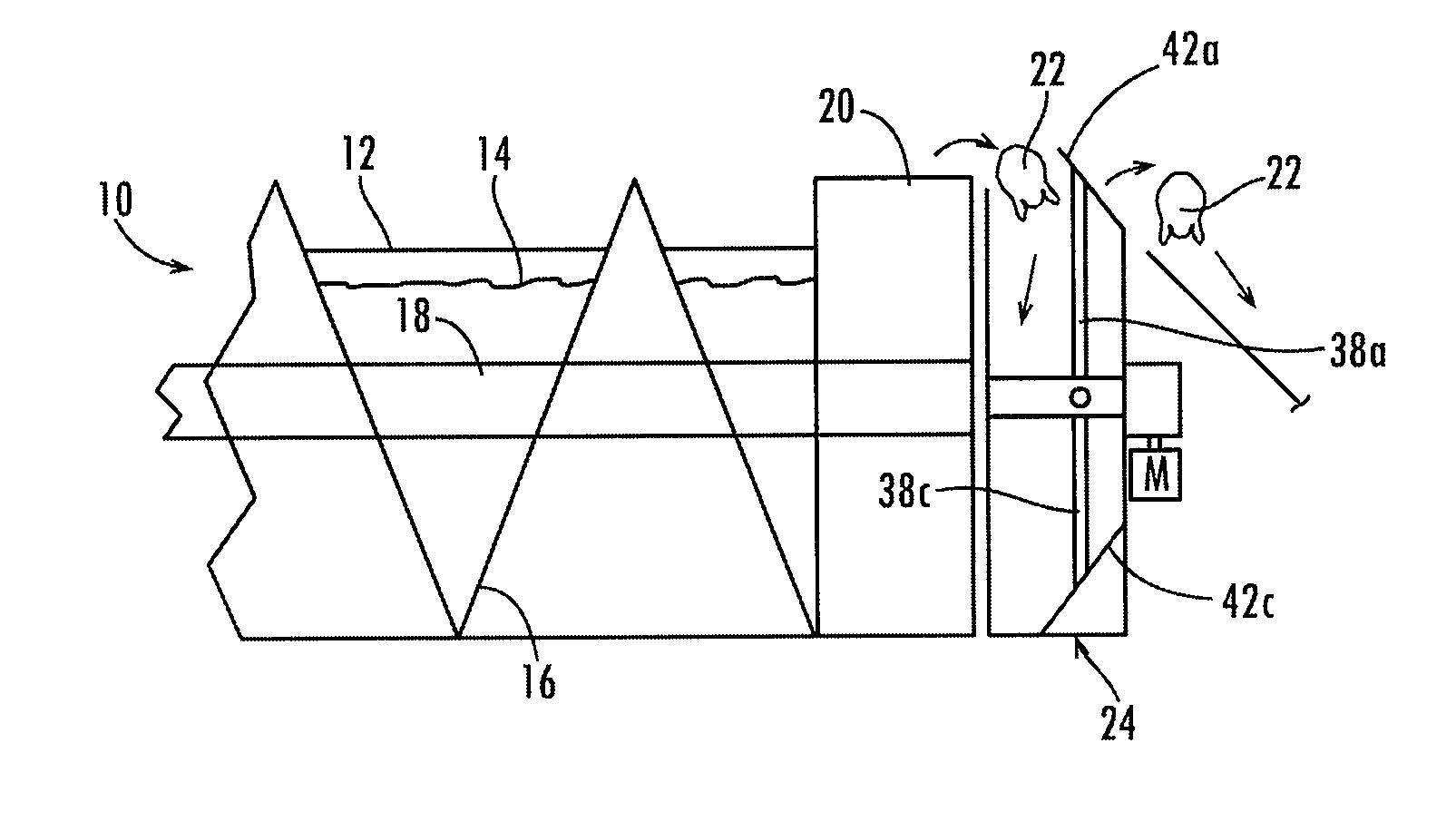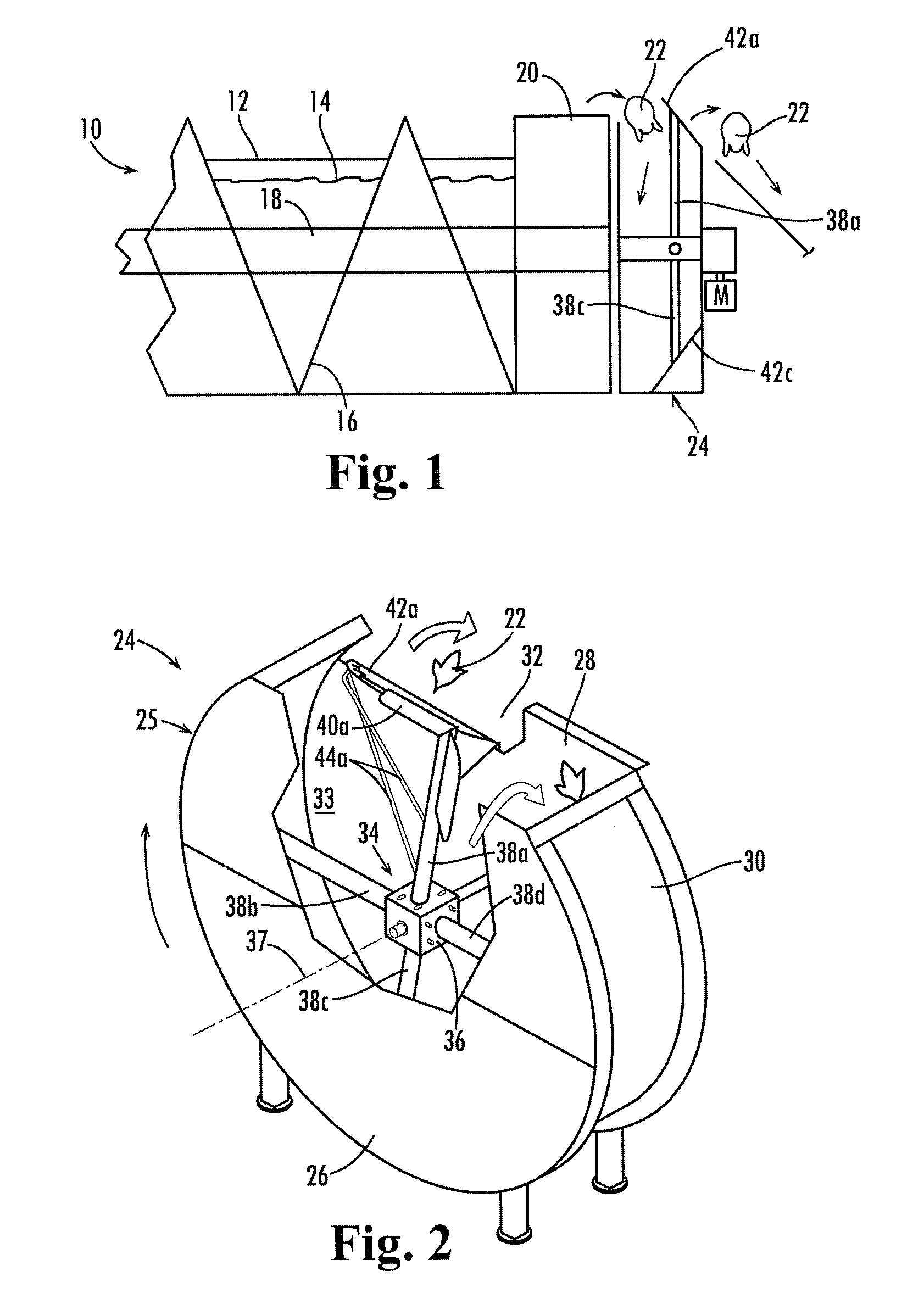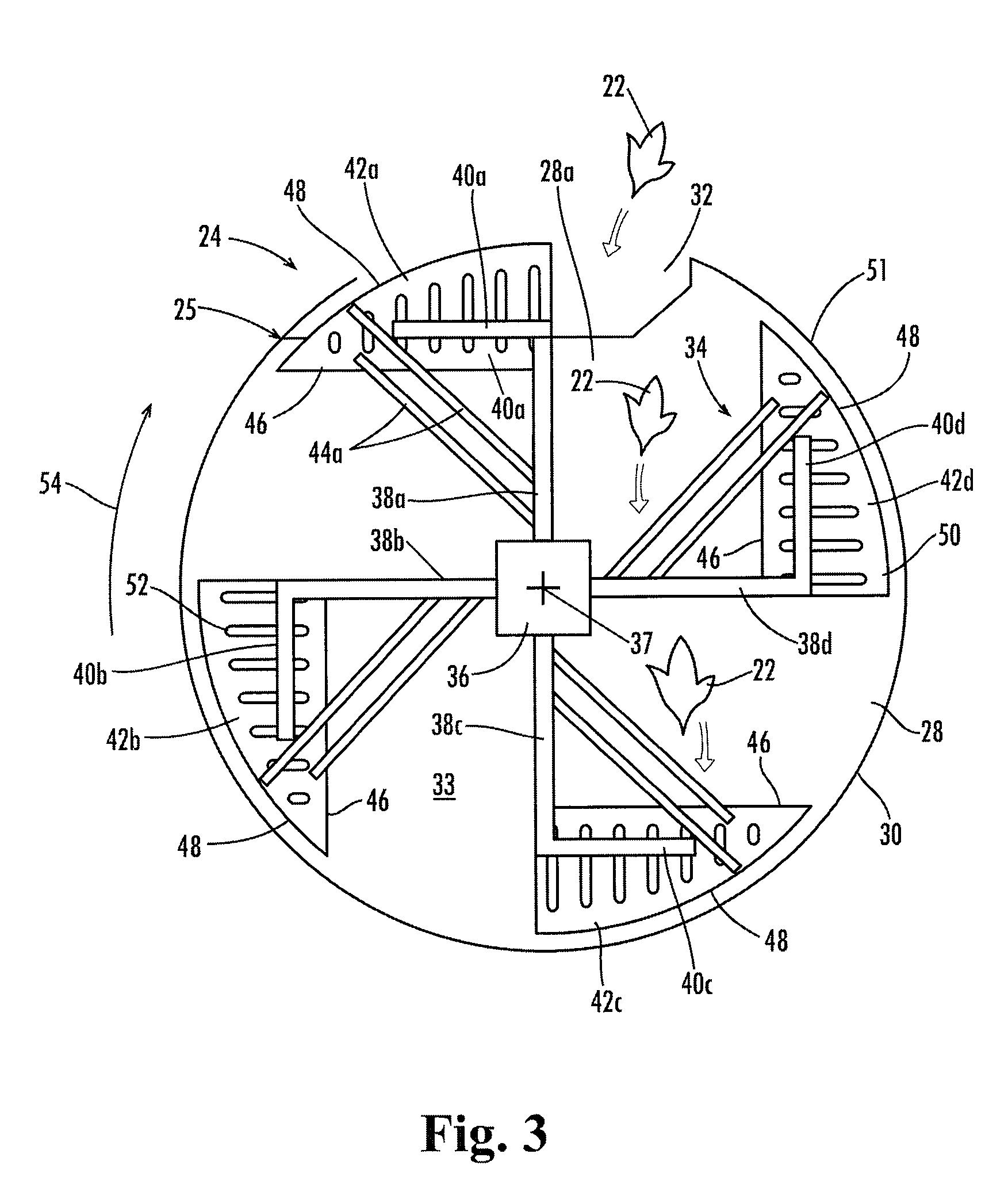Post chill decontamination tank
a decontamination tank and post chill technology, applied in the field of decontamination, can solve the problems of bird microbial contamination, self-inflicted and cross-contamination, and the potential to intensify, and achieve the effect of enhancing the liquid and mechanical agitation of the birds and reducing the microbial contamination
- Summary
- Abstract
- Description
- Claims
- Application Information
AI Technical Summary
Benefits of technology
Problems solved by technology
Method used
Image
Examples
Embodiment Construction
[0035]As shown in FIG. 1, a chiller 10 comprises an open top semi-circular tank 12 that is capable of holding water up to the level 14. An auger 16 or other device is mounted in the tank 12 to move the birds 22 along the length of the tank. The auger 16 is rotatable about its axial shaft 18 so as to urge dressed poultry carcasses, (sometimes herein “birds”) from an entry end toward the unloader 20. The unloader lifts the birds from the water and discharges the birds to the next equipment. This is shown by bird 22. The birds drop into the post chill decontamination tank 24. The chiller 10 and unloader 20 may be of typical prior art construction.
[0036]FIG. 2 illustrates the post chill decontamination tank assembly 24. The assembly includes a tank 25 that includes an upright entrance wall 26, an opposing upright exit wall 28, and a semi-circular perimeter wall 30 that extends between the entrance wall 26 and the exit wall 28. The walls of the tank define a paddle chamber 33 with an upp...
PUM
 Login to View More
Login to View More Abstract
Description
Claims
Application Information
 Login to View More
Login to View More - R&D
- Intellectual Property
- Life Sciences
- Materials
- Tech Scout
- Unparalleled Data Quality
- Higher Quality Content
- 60% Fewer Hallucinations
Browse by: Latest US Patents, China's latest patents, Technical Efficacy Thesaurus, Application Domain, Technology Topic, Popular Technical Reports.
© 2025 PatSnap. All rights reserved.Legal|Privacy policy|Modern Slavery Act Transparency Statement|Sitemap|About US| Contact US: help@patsnap.com



